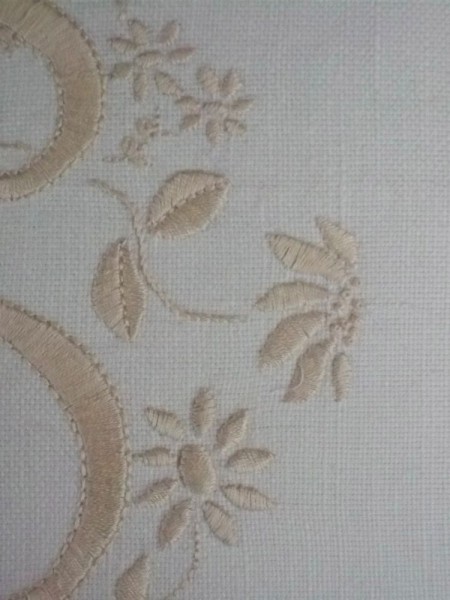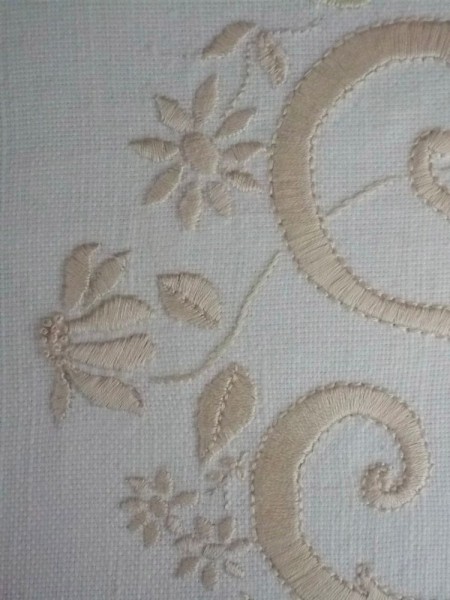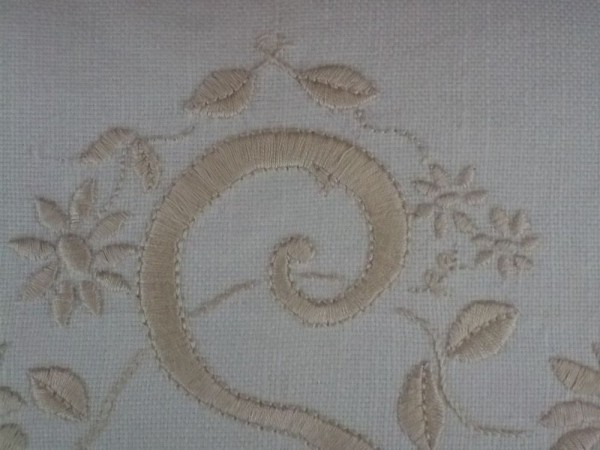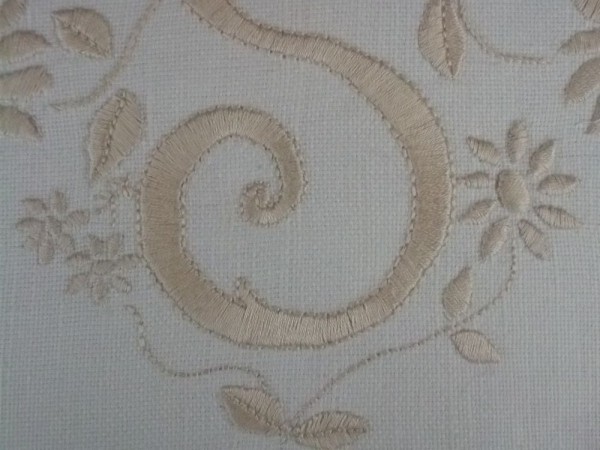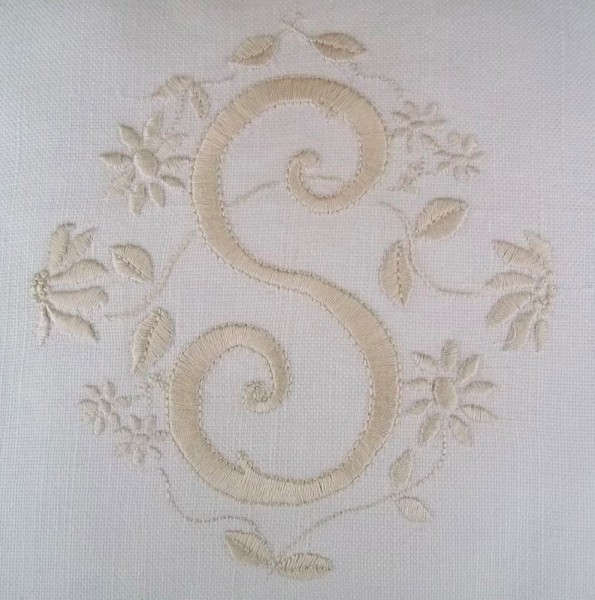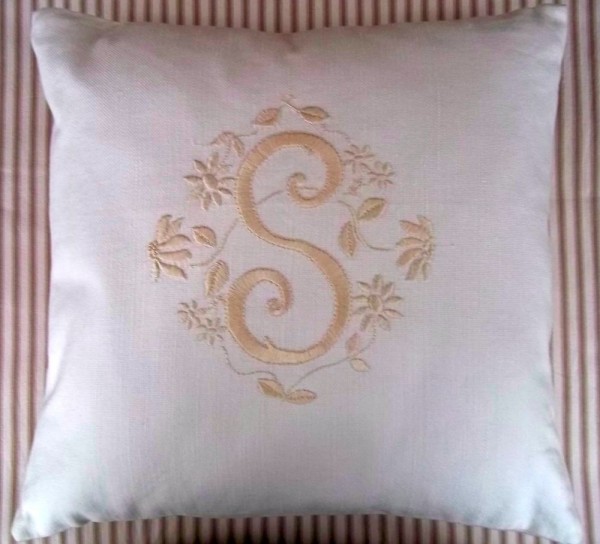
Cushion hand embroidered with daisies and the initial S.
Linen and cotton fabric; embroidery in ecru embroidery cotton.
Embroiderers must have covered almost as great an acreage of linen with daisies as can be found covering the grass in an average British summer. There’s something very satisfying about the simplicity of the shape of the flower that makes you embroider them again and again once you’ve done a few. Go into any junk shop (though it’s true, there are few enough of them left now) or car boot sale and you can guarantee seeing a piece of linen with this simplest of flower shapes calling out to you. Usually the petals are a long lazy daisy stitch with a mass of french knots in the middle. Here I have used satin stitch to get the shiny quality of the petals and french knots or satin stitch for the middle, which truth to say is much more of a soft velvety pile on the flower itself.
This cushion was made for the daughter of a friend, an innocent soul but sharp and perspicacious enough to see right through to the very essence of what makes you tick. In fact she is not at all unlike Daisy Ashford who at 9 years in 1919 old wrote ‘The Young Visitors” (or ‘Mr Salteena’s Plan) which is an amusing critique of the upper classes and grown ups of her day (not all of which is outdated). Here are a couple of quotes to give you a flavour of the book.
“Mr Salteena was an elderly man of 42”
“Bernard always had a few prayers in the hall and some whiskey afterwards as he was rather pious but Mr Salteena was not very addicted to prayers so he marched up to bed.”
“Oh I see said the Earl but my own idear (sic) is that these things are as piffle before the wind.”
Just a hint of Boris Johnson too, perhaps.
The name for the flower, daisy, is derived from the Old English for day’s eye, daegeseage (daeg=day and eage=eye) because the true daisy, the English daisy, (Bellis perennis) opens only during the day, drawing its corolla of 15-30 petals over to protect the important parts of the flower (a trait known as nyctinasty). It is not known why this happens but it may be that pollinating insects are not active at night or in low light and closing the petals helps ensure as little pollen loss as possible. Curiously not all that we call daisies are in fact ‘day’s eye’ as many do not close at night.
As well as adding charm to our landscape, the daisy has also ornamented our language.
“Oops-a daisy”, we say to small children who tumble over to encourage them to to get up quickly and forget their mishap. Or we might say “up-a-day”, if we feel like it. Those interested in language love nothing more than pinning down the earliest written use of such everyday phrases and this one in particular has attracted a fair bit of excitement. Jonathan Swift in “The Journal to Stella” (1711) overwhelms us with excitement with
“Come stand away, let me rise…is there a good fire? – So up a-dazy.”
There are even earlier quotes which ratchet to ever more sublime heights the torture performed on a wonderfully expressive phrase and I just can’t get sufficiently excited to quote any more of them. Whatever caused the phrase to be first used, those sybillant, hissing, assonant ss make it a joy to get your lips around and transcend any thoughts of textual criticism.
But ‘oops-a-daisy’ should not be confused with ‘whoops-a-daisy’ which we say when we, either make a small faux pas and come out with some inappropriate or tactless remark , or when we recover from some potentially embarrassing fall or burst into a room in which there is someone who really didn’t want to be burst in upon. But the fault is never a serious one. The whoops version of the phrase seems to be early C20th American in origin, though it is plentifully in use in the UK today, probably because the whooshing ‘w’ at the beginning of the word slides out so smoothly on the exhaled breath of relief when you realise you haven’t fallen/have invaded someone’s privacy. Googling these few words, The Phrase Finder highlights its use in the film ‘Notting Hill’. The character played by Hugh Grant falls over and says, “whoops a daisies”, to which the Hollywood star Julia Roberts, playing a Hollywood star, comments, “no one has said ‘whoops a daisies’ for fifty years and even then it was only little girls with blonde ringlets.” I agree with Phrasefinder that that may be true in California, but that the writer Richard Curtis should know better. I doubt that I get through a single day without saying it several times, and that figure increases exponentially when small children, and possibly cats (wanting to be fed and winding in and out of your legs ) are around. I’m not at all sure about the plural daisies, though.

